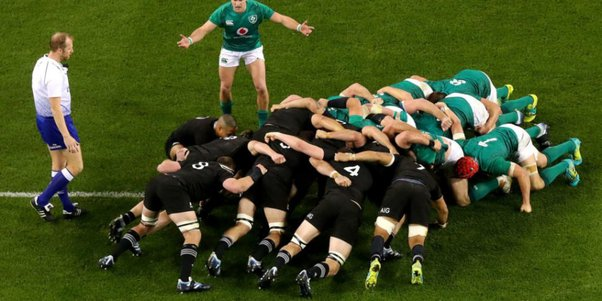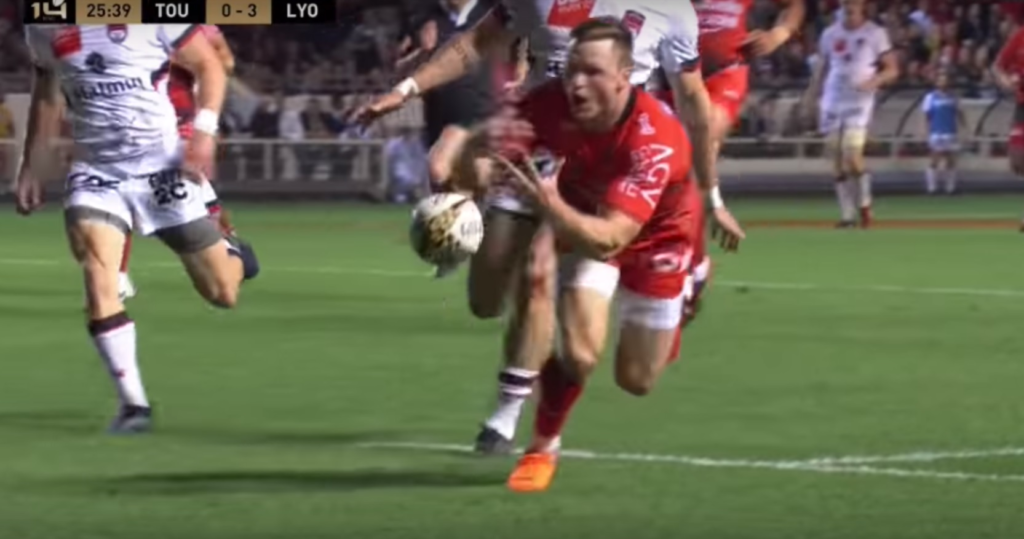A penalty try is one of the rarer ways that teams score in rugby. This means that a lot of people don’t know how many points a team gets for scoring a penalty try.
Is a penalty try 7 points? A penalty try is seven points in rugby. This is because it is five points for a try and you get the two points for a conversion without having to take the kick.

A penalty try is when the defending team illegally stops the attacking team from scoring a try. So it means that when a penalty try is awarded the attacking team is given seven points. Five of those points are from the try that was prevented, with the attacking team also receiving the two points from the conversion.
Automatically giving the attacking team the two points for the conversion is to put defending teams off conceding penalty tries and to defend legally when they get close to their own try line.
What makes a penalty try?
There are various things that the defending team can do to concede a penalty try, including bringing down a maul, intentional knock-on or being offside.
Can a Penalty try be given for bringing down a maul?
Illegally bringing down a maul is one of the most common reasons for a penalty try being given. Mauls are a huge attacking weapon and have become more difficult to stop over the last few years. When teams get a penalty they will often kick for the corner to set up the drive from the lineout.
Due to it being such a good attacking weapon, defending teams will often bring down the maul illegally. They will do this by falling to their feet, causing the maul to collapse or illegally entering the maul from the side and tackling the man with the ball. Collapsing the maul in itself does not mean it will be a penalty try.
It is only a penalty try when the referee deems that the drive would have gone over the line had it not been brought down illegally. This is the choice of the referee and you will see some cases where the referee does not award the penalty try even if it looks like the driving maul is going over the line.
It is really up to the referee as to whether the penalty try is awarded. But if the referee believes that the maul would have gone over the line if it had not been brought down illegally then it is a penalty try and a yellow card for the player who caused the infringement.
Can a Penalty try be given for an intentional knock-on?
Intentional knock-ons have been a point of emphasis for rugby referees over the last few years with the punishment being harsher than ever before. But one thing that has remained constant is that a penalty try can be awarded for an intentional knock-on if it prevents a try.
This is something we see a lot when the attacking team is trying to get the ball out wide into the hands of the wingers. When these passes come across the line, defenders will often stick out one hand and block the ball, knocking it forward. As they are sticking out one hand there is no attempt to catch the ball and this is deemed to be a knock-on.

If the pass would have gone into a player’s hands who would have likely scored a try then the referee can award a penalty try for this. When there is no defender marking the attacker that the ball would have gone to, the referee can award a penalty try as the defender illegally stopped a try by knocking the ball on with one hand.
The majority of knock ons occur while trying to intercept the ball are now seen as intentional if the player does not have the chance to regather the ball, which is a decision that is a grey area in the rule book. Whether a player could have regathered the ball is really a decision made by the referee and it determines whether the knock-on was intentional or not.
If the knock-on was not intentional then it is not a penalty try, it is a scrum to the attacking team.
Can a Penalty try be given for being offside?
Being offside is one of the simpler rules in rugby, but not many people realise that being offside can be a cause for a team conceding a penalty try. If the referee decides that a try would have been scored had the offending player not been offside then they can award the penalty try.
A common way this happens is when a player never gets back onside after a line break and makes a tackle that prevents a try. By doing this, they prevent the try illegally and give the referee enough evidence to award a penalty try.
Another common way this happens is when a defending player intercepts a pass that would have likely led to a try while being offside. The fact that they were offside is often the reason they were able to intercept the pass and the referee can award a penalty try if the pass would have likely led to a try.
Can a penalty try be given for obstruction?
Obstruction is not one of the most common reasons for a penalty try being awarded but it is still a reason why the referee could award a penalty try. It is something that we see happen when an attacking player makes an attacking kick.
After a line break, there is often a situation where the attacking player is faced with a 1v1 against the defending fullback. If the attacker does not feel like they could run past the defender they may kick the ball behind the defender and chase the ball down. If the defender blocks the attacker from getting the ball then it is obstruction.
If there is no cover and the attacking player likely would have scored the try had they not been obstructed then the referee can award a penalty try and give the fullback a yellow card.
